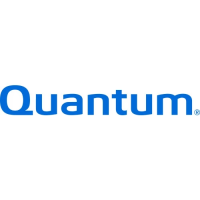•
Section 4
SCSI Interface
4.3.4
SCSI BUS TIMING
Unless otherwise indicated, the delay-time measurements are at the drive's own SCSI bus connection.
Thus, these measurements, except cable skew delay, can be made without considering delays in the cable.
ARBITRATION DELAY (2.4
microseconds)
- The minimum time an SCSI device must
wait from asserting
BSY
for arbitration until the DATA BUS can be examined to see if arbitration
has been won. There is no maximum time.
ASSERTION PERIOD (90
nanoseconds)
- The minimum time ProDrive will assert
REQ during synchronous data transfers. Also, the minimum time an initiator will assert ACK
during synchronous transfers.
BUS CLEAR DEL A Y (800
nanoseconds)
- The maximum time for an SCSI device to stop
driving all bus signals after:
1)
The BUS FREE phase is detected
(BSY
and SEL both false for a bus settle delay)
2)
SEL is received from another SCSI device during the ARBITRA
nON
phase
3) The transition
of
RST to true.
NOTE: For the first condition above, the maximum time for an SCSI device to clear the bus is
1200 nanoseconds from both
BSY
and SEL first becoming false.
If
an SCSI device requires
more than a
bus settle delay to detect BUS FREE phase, it must clear the bus within a bus
clear delay
minus the excess time.
BUS
FREE
DELAY (800
nanoseconds)
- The minimum time that an SCSI device must wait
from its detection
of
the BUS FREE phase
(BSY
and SEL both false for a bus settle delay) until its
assertion
of
BSY
when going to the ARBITRATION delay.
BUS SET DELAY (1.8
microseconds)
- The maximum time before an SCSI device must
assert
BSY
and its SCSI ID bit on the DATA BUS after it detects BUS FREE phase
(BSY
and SEL
both false for a bus settle delay) for the purpose
of
entering the ARBITRATION phase.
BUS SETTLE DELAY (400
nanoseconds)
- The time to wait for the bus to settle after
changing certain control signals as called out in the protocol definitions.
CABLE SKEW DELAY (10 nanoseconds) - The maximum difference
in
propagation time
allowed between any two
SCSI bus signals when measured between any two SCSI devices.
DAT A RELEASE DELAY (400
nanoseconds)
- The maximum time before an initiator
must release the DATA
BUS signals following the transition
of
the
110
signal from false to true.
DESKEW DELAY (45 nanoseconds) - The minimum time required for deskew
of
certain
signals.
HOLD
TIME
(45 nanoseconds) - During synchronous data transfers, the minimum time added
between the assertion
of
REQ
or
ACK
and the changing
of
the data lines to provide hold time in the
initiator
or
target, respectively.
NEGATION PERIOD (90
nanoseconds)
- During synchronous data transfers, the minimum
time the
ProDrive will negate REQ, and the minimum time an initiator will negate ACK.
RESET HOLD TIME (25
microseconds)
- The minimum time for which RST is asserted.
There is no maximum time.
SCSI Interface 4 - 5

